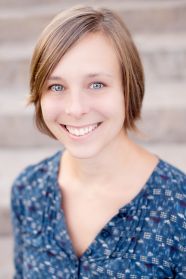Helping People with Seasonal Affective Disorder to Sleep Better
Author: Melissa Carlson - University of Pittsburgh
Published: 2013/06/28 - Updated: 2020/02/05
Category Topic: Sleep Disorders - Academic Publications
Page Content: Synopsis - Introduction - Main
Synopsis: Researchers find individuals with seasonal affective disorder incorrectly reported that they slept four more hours a night in the winter. One of the most effective treatment options for insomnia is cognitive behavioral therapy for insomnia (known as CBT-I)
Introduction
Lying awake in bed plagues everyone occasionally, but for those with seasonal affective disorder, sleeplessness is routine. University of Pittsburgh researchers report in the Journal of Affective Disorders that individuals with seasonal affective disorder (SAD) a winter depression that leads to loss of motivation and interest in daily activities have misconceptions about their sleep habits similar to those of insomniacs. These findings open the door for treating seasonal affective disorder similar to the way doctors treat insomnia.
Main Content
What is Seasonal Affective Disorder (SAD)?
Seasonal Affective Disorder (SAD) is defined as a type of depression that occurs at a certain time of the year, usually in the winter. People who live in places with long winter nights are at greater risk of SAD. A less common form of the disorder involves depression during the summer months. There is no test for SAD. Your health care provider can make a diagnosis by asking about your history of symptoms. Treatment for seasonal affective disorder includes light therapy (phototherapy), psychotherapy and medications.
Kathryn Roecklein, primary investigator and assistant professor in Pitt's Department of Psychology within the Kenneth P. Dietrich School of Arts and Sciences, along with a team of researchers from Pitt's School of Medicine and Reyerson University, investigated why, according to a previously published sleep study by the University of California, Berkeley, individuals with seasonal affective disorder incorrectly reported that they slept four more hours a night in the winter.
"We wondered if this misreporting was a result of depression symptoms like fatigue and low motivation, prompting people to spend more time in bed," said Roecklein. "And people with seasonal affective disorder have depression approximately five months a year, most years. This puts a significant strain on a person's work life and home life.
Roecklein and her team interviewed 147 adults between the ages of 18 and 65 living in the Pittsburgh metropolitan area during the winters of 2011 and 2012. Data was collected through self-reported questionnaires and structured clinical interviews in which participants were asked such questions as:
- In the past month, have you been sleeping more than usual?
- "How many hours, on average, have you been sleeping in the past month? How does that compare to your normal sleep duration during the summer?
In order to understand participants' ideas about sleep, Roecklein's team asked them to respond to questions such as:
- I need at least 8 hours of sleep to function the next day.
- Insomnia is dangerous for health.
on a scale from 0 to 7, where 7 means "strongly agree" and 0 means "disagree completely."

Roecklein and her team found that SAD participants' misconceptions about sleep were similar to the "unhelpful beliefs" or personal misconceptions about sleep that insomniacs often hold. Due to depression, individuals with SAD, like those with insomnia, may spend more time resting in bed, but not actually sleeping leading to misconceptions about how much they sleep. These misconceptions, said Roecklein, play a significant role in sleep cognition for those with seasonal affective disorder.
"We predict that about 750,000 people in the Pittsburgh metro area suffer from seasonal affective disorder, making this an important issue for our community and the economic strength and vitality of our city," said Roecklein. "If we can properly treat this disorder, we can significantly lower the number of sufferers in our city."
Roecklein's research data suggests that addressing, understanding, and managing these "unhelpful beliefs" about sleep by way of psychotherapy could lead to improved treatments for seasonal affective disorder.
One of the most effective treatment options for insomnia, said Roecklein, is cognitive behavioral therapy for insomnia (known as CBT-I), which aims to help people take control of their thinking to improve their sleep habits as well as mood, behavior, and emotions.
Roecklein's next research project aims to improve treatment for seasonal affective disorder by studying light perception and biological clock synchronization.
Light from the environment synchronizes internal biological rhythms with the timing of dawn and dusk, which naturally changes with the seasons. This synchronization allows people to be awake and alert during the day and to sleep at night. Roecklein will examine whether people with seasonal affective disorder perceive this light from the environment differently because of changes in the function of neurological pathways from the eye to the brain. This could help uncover reasons why people suffer from seasonal affective disorder and could suggest new treatment options.
Roecklein's research team included, Peter L. Franzen and Brant P. Hasler of the University of Pittsburgh School of Medicine's Department of Psychiatry, Pitt psychology graduate student Patrica M. Wong, and Colleen E. Carney from Reyerson University's Department of Psychology.
Their paper, "The Role of Beliefs and Attitudes About Sleep in Seasonal and Non-seasonal Mood Disorder, and Non-depressed Controls" was originally published online May 23 in the Journal of Affective Disorders. This work was partially supported by a National Institutes of Health grant.
Attribution/Source(s): This quality-reviewed publication was selected for publishing by the editors of Disabled World (DW) due to its relevance to the disability community. Originally authored by Melissa Carlson - University of Pittsburgh and published on 2013/06/28, this content may have been edited for style, clarity, or brevity.